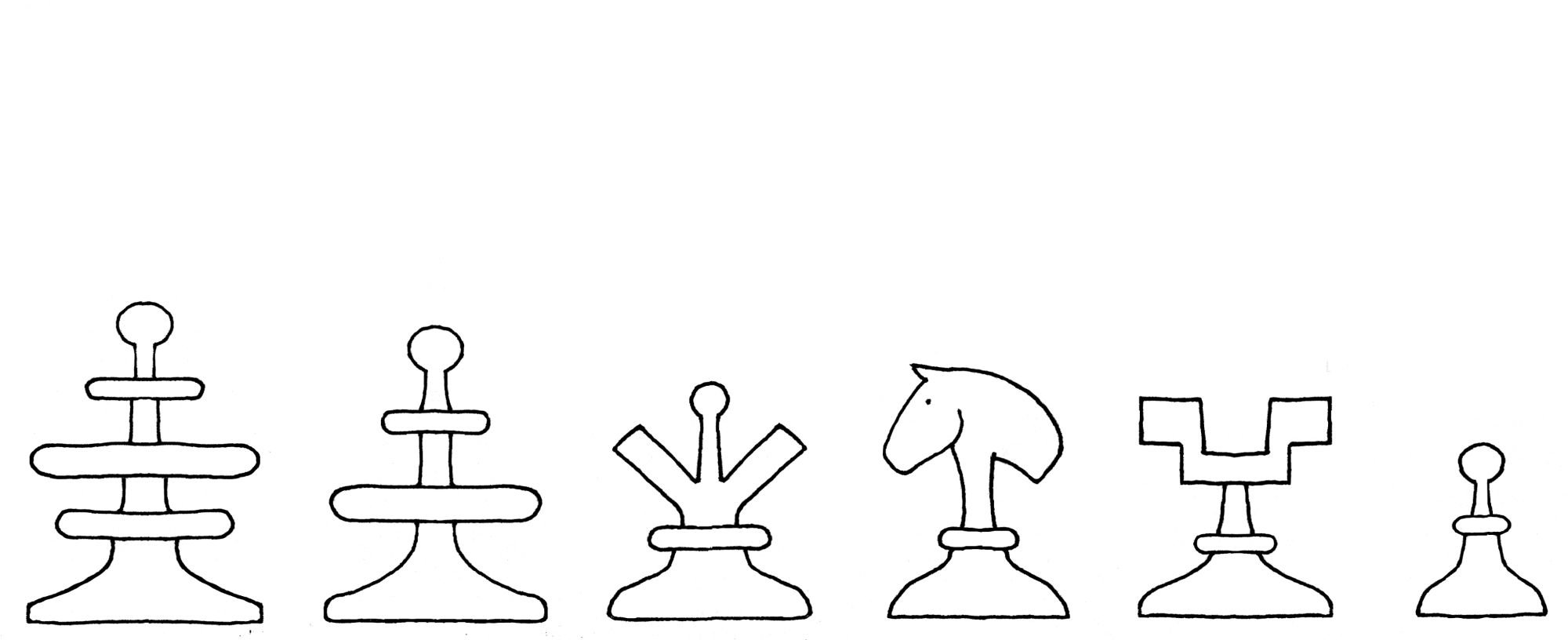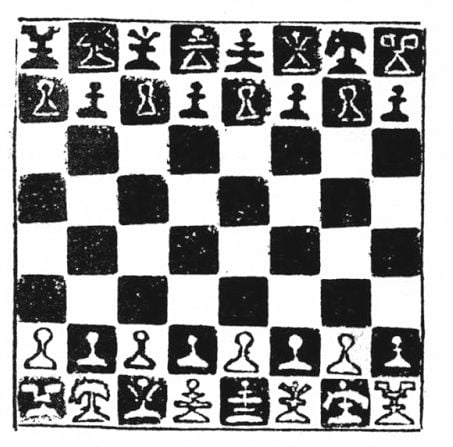The chess set of Pedro Damiano, c. 1512
Pedro Damiano, a Portuguese chess player, published the first edition of Questo libro e da imparare giocare a scachi et de li partiti in Rome in 1512. Several further editions of the book were published in his lifetime, and posthumously in the later sixteenth century. The now-familiar form of the castle tower representing the rook appears for the first time in one of these later editions. The 1512 edition, however, illustrates a chess set in which the forms of the rook and bishop originate in early medieval chess sets, while the knight, as a carved horse's head is one of the earliest to have this form (see also Lucena), one that persists in modern chess sets.
The rook is still firmly within the early symbolic tradition, with projections representing those on a chariot, though somewhat angular rather than the curvy form of most sets, and truncated. The knight is a horse's head. The bishop, following the style of the king and queen, terminates in a slender column with a ball, but still retains the two points of the earliest medieval forms, truncated in this case and matching the rook in style. The king and queen however, are turned, with tiers of disks, similar to those in the sets of Regnault (1468-70) and Pacioli (1500). In sets published by later authors these will become crowns, culminating in the Selenus set of over 100 years later, but also seen in the set played by Duke Albrecht V and the Duchess Anna of Bavaria in 1552.



